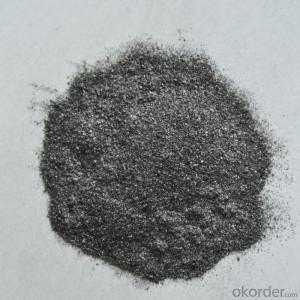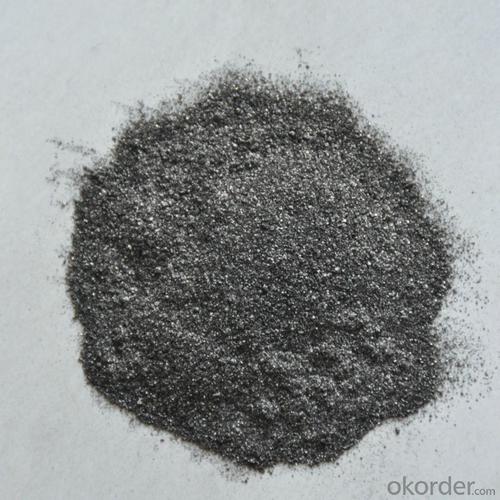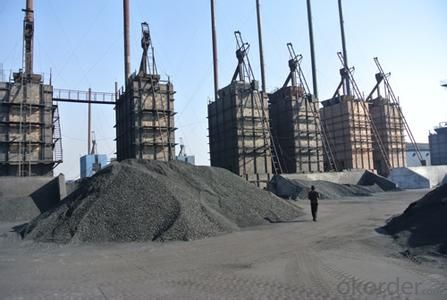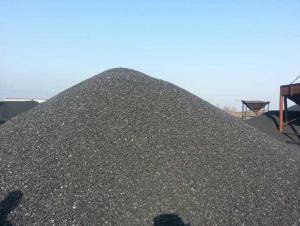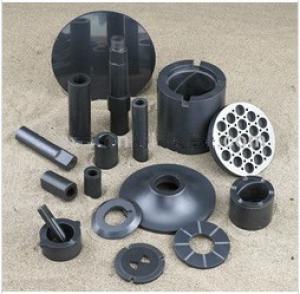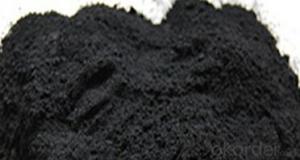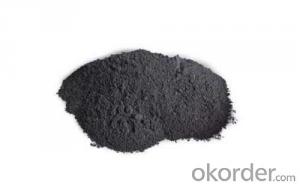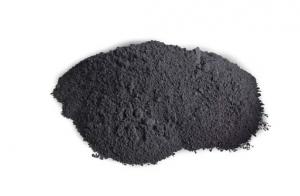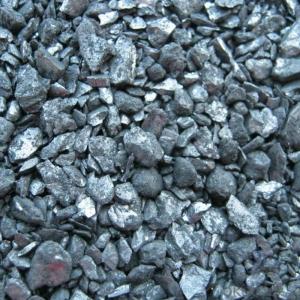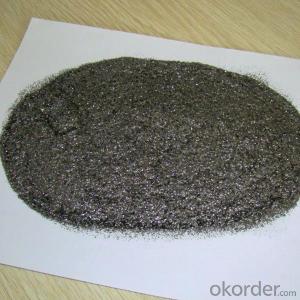Natural Flake Graphite Carbon Product For Industry
- Loading Port:
- Qingdao
- Payment Terms:
- TT OR LC
- Min Order Qty:
- 10 m.t
- Supply Capability:
- 5000000 m.t/month
OKorder Service Pledge
OKorder Financial Service
You Might Also Like
Specifications of Natural Flake Graphite:
F.C:80%min-98%min Size:+80mesh,+100mesh,-100mesh.
- Description & Application:
Widely applied to high quality fire resistance material and coating of metallurgy industry, hot working
material stabilizer of military industry, lead of light industry, carbon brush of electrical industry, electrode of
battery industry, and catalyzer and additive of fertilizer industry. After further process, scale graphite can be
made into the following high-tech products such as graphite colloidal graphite, graphite compacting material
and composite material, graphite products, and graphite anti-friction additive, which are becoming important
nonmetal mineral materials in every industry.
- Technical Specification:
ITEM | F.C %(min) | V.M %(max) | ASH %(max) | MOISTURE %(max) | SIZE |
-198 | 98 | 1.0 | 1.0 | 0.5 | -100mesh |
+198 | 98 | 1.0 | 1.0 | 0.5 | +100mesh |
-197 | 97 | 1.2 | 1.8 | 0.5 | -100mesh |
+197 | 97 | 1.2 | 1.8 | 0.5 | +100mesh |
-196 | 96 | 1.2 | 2.8 | 0.5 | -100mesh |
+196 | 96 | 1.2 | 2.8 | 0.5 | +100mesh |
-195 | 95 | 1.2 | 3.8 | 0.5 | -100mesh |
+195 | 95 | 1.2 | 3.8 | 0.5 | +100mesh |
-194 | 94 | 1.2 | 4.8 | 0.5 | -100mesh |
+194 | 94 | 1.2 | 4.8 | 0.5 | +100mesh |
-193 | 93 | 1.5 | 5.5 | 0.5 | -100mesh |
+193 | 93 | 1.5 | 5.5 | 0.5 | +100mesh |
-192 | 92 | 1.5 | 6.5 | 0.5 | -100mesh |
+192 | 92 | 1.5 | 6.5 | 0.5 | +100mesh |
-190 | 90 | 2.0 | 8.0 | 0.5 | -100mesh |
+190 | 90 | 2.0 | 8.0 | 0.5 | +100mesh |
-185 | 85 | 2.5 | 12.5 | 0.5 | -100mesh |
+185 | 85 | 2.5 | 12.5 | 0.5 | +100mesh |
-180 | 80 | 3.0 | 17.0 | 1 | -100mesh |
+180 | 80 | 3.0 | 17.0 | 1 | +100mesh |
+897 | 97 | 1.2 | 1.8 | 0.5 | +80mesh |
+896 | 96 | 1.2 | 2.8 | 0.5 | +80mesh |
+895 | 95 | 1.2 | 3.8 | 0.5 | +80mesh |
+894 | 94 | 1.2 | 4.8 | 0.5 | +80mesh |
+892 | 92 | 1.5 | 6.5 | 0.5 | +80mesh |
+890 | 90 | 2.0 | 8.0 | 0.5 | +80mesh
|
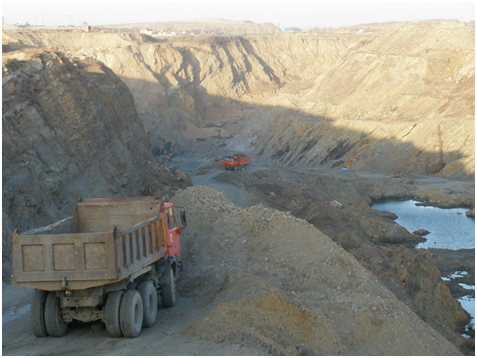
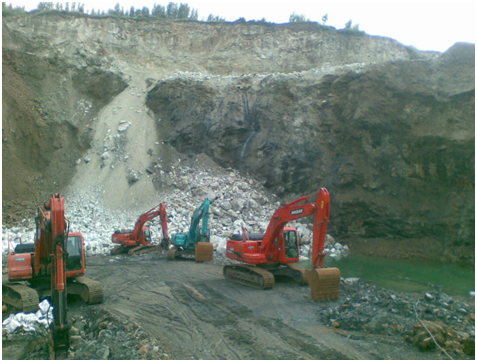

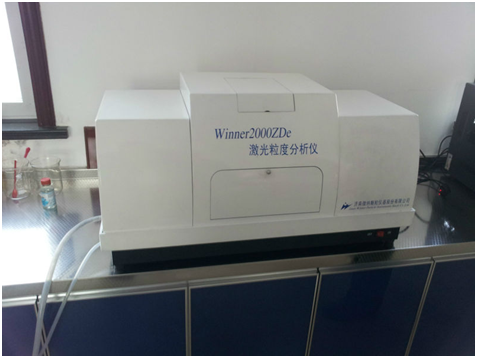
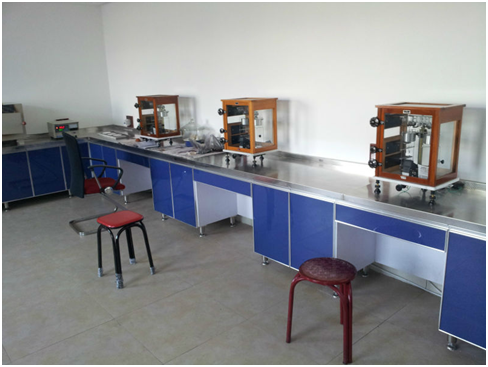
- Q: What are the benefits of carbon fiber?
- Carbon fiber has many excellent properties, carbon fiber axial strength and high modulus, low density, high performance, no creep, non oxidation under the environment of high temperature resistance, good fatigue resistance, between heat and electrical conductivity between the metal and non metal, smaller thermal expansion coefficient and anisotropy, good corrosion resistance, X Radiability good. Good conductivity, thermal conductivity, good electromagnetic shielding, etc..Compared with the traditional carbon fiber glass fiber, the young's modulus is more than 3 times; compared with Kevlar fiber, the young's modulus is about 2 times in the organic solvent, acid and alkali insoluble swelling, outstanding corrosion resistance.
- Q: What is carbon neutral manufacturing?
- Manufacturing goods while minimizing or offsetting carbon emissions is what carbon neutral manufacturing is all about. The goal is to reduce greenhouse gas emissions at every stage of the manufacturing process, from obtaining raw materials to disposing of finished products. Achieving this involves various measures, such as improving energy efficiency, utilizing renewable energy sources, implementing sustainable practices, and investing in carbon offset projects. To become carbon neutral, manufacturers typically start by conducting a comprehensive assessment of their carbon footprint. This involves identifying and quantifying all emissions generated in their operations, including both direct emissions from manufacturing processes and indirect emissions from energy sources. Once emissions are measured, manufacturers can devise strategies to decrease their carbon footprint. Common methods for achieving carbon neutrality in manufacturing include optimizing energy consumption through efficient equipment and technologies, adopting renewable energy sources like solar or wind power, and implementing waste reduction and recycling programs. Additionally, manufacturers can invest in carbon offset projects that aim to reduce or eliminate greenhouse gas emissions, such as reforestation or renewable energy initiatives. By implementing these measures and offsetting any remaining emissions, manufacturers can achieve carbon neutrality. This not only helps combat climate change by reducing overall carbon footprints but also demonstrates a commitment to sustainability and environmental responsibility. Carbon neutral manufacturing is an important step towards transitioning to a low-carbon economy and creating a more sustainable future.
- Q: But their chemical symbols are different, so they are different elements, different substances, but they feel the same thing... Tangled up ~!
- One kind is metal, one kind is nonmetal, the property is not lively, the property is stable,
- Q: How does carbon impact ocean acidity?
- Carbon impacts ocean acidity through a process called ocean acidification. When carbon dioxide (CO2) from human activities is emitted into the atmosphere, a significant portion of it is absorbed by the ocean. Once in the ocean, CO2 reacts with water to form carbonic acid, which lowers the pH of seawater, making it more acidic. This increased acidity can have detrimental effects on marine life, particularly on shell-forming organisms like corals, mollusks, and some plankton, as it hampers their ability to build and maintain their calcium carbonate structures. Additionally, ocean acidification disrupts the delicate balance of marine ecosystems, affecting various species and ultimately impacting the entire food chain.
- Q: How does carbon affect the water cycle?
- Carbon affects the water cycle primarily through the process of photosynthesis, where plants and algae absorb carbon dioxide from the atmosphere and release oxygen. This process not only regulates the carbon dioxide levels in the atmosphere, but also influences the temperature and precipitation patterns, subsequently impacting the water cycle. Additionally, carbon dioxide dissolves in water, forming carbonic acid, which can alter the pH levels of water bodies and potentially affect aquatic life and the overall balance of the water cycle.
- Q: How is carbon used in the production of nanoelectronics?
- Carbon is used in the production of nanoelectronics in a variety of ways. One of the most prominent uses is in the fabrication of carbon nanotubes (CNTs), which are cylindrical structures made entirely of carbon atoms. These nanotubes have unique electrical and mechanical properties that make them ideal for use in nanoelectronic devices. CNTs can be utilized as transistors, which are the fundamental building blocks of electronic circuits. Due to their small size and excellent electrical conductivity, CNT transistors can be used to create high-performance, low-power devices. They have the potential to replace traditional silicon transistors and enable the development of more advanced and compact electronic devices. Carbon is also used in the production of graphene, which is a single layer of carbon atoms arranged in a two-dimensional honeycomb lattice. Graphene exhibits exceptional electrical conductivity, thermal conductivity, and mechanical strength. It can be used as a conductive material in nanoelectronics, enabling the development of faster and more efficient electronic devices. Furthermore, carbon-based materials can be utilized in nanoelectronics for energy storage purposes. For instance, carbon nanotubes and graphene can be used in supercapacitors, which are energy storage devices capable of storing and delivering large amounts of electrical energy quickly. These carbon-based energy storage systems have the potential to revolutionize the field of portable electronics and electric vehicles. In summary, carbon is extensively used in the production of nanoelectronics. Its unique properties, such as high electrical conductivity, mechanical strength, and thermal conductivity, make it an ideal material for the development of high-performance electronic devices. Carbon nanotubes, graphene, and other carbon-based materials are key components in the fabrication of nanoelectronic devices, enabling advancements in computing power, energy storage, and miniaturization of electronic components.
- Q: What are the different types of carbon-based food additives?
- There are several different types of carbon-based food additives that are commonly used in the food industry. These additives serve various purposes, including enhancing flavor, improving texture, and extending the shelf life of food products. Here are a few examples: 1. Activated Carbon: This type of carbon-based additive is commonly used as a food coloring agent. It is a porous form of carbon that is processed to have high adsorption properties. Activated carbon is often used to give black color to certain food and beverages, such as black food coloring or black lemonade. 2. Carbon Black: Also known as vegetable carbon or vegetable black, this additive is derived from charcoal and is commonly used as a natural food coloring agent. It is often used to give a dark black or grey color to foods like black licorice, ice cream, and bakery products. 3. Carbon Dioxide: While not directly added as an additive, carbon dioxide gas is used in food processing and packaging to extend the shelf life of certain products. It is commonly used in carbonated beverages to create the characteristic fizz and also in modified atmosphere packaging to preserve the freshness of certain foods. 4. Carbonated Water: This is carbon dioxide gas dissolved in water, creating carbonic acid. Carbonated water is often used as a base for soft drinks and beverages, providing effervescence and a refreshing taste. 5. Carbonates: Carbonates, such as calcium carbonate and sodium carbonate, are used as acidity regulators in food products. They help maintain the pH balance and control the acidity of certain foods, such as canned vegetables, fruit preserves, and pickles. 6. Carbon-based Preservatives: Some carbon-based additives, such as sorbic acid and propionic acid, are used as preservatives to inhibit the growth of molds, bacteria, and yeasts in food products. These additives help to extend the shelf life of products like bread, cheese, and processed meats. It is important to note that while carbon-based food additives are generally considered safe for consumption, it is always advisable to read food labels and consult with professionals, such as dietitians or healthcare providers, if you have any concerns or specific dietary restrictions.
- Q: Carbon fiber refractory?
- Carbon fiber carbonization points: 1, graphitized carbon fiber cloth, can withstand 2000--3000 degrees of high temperature;
- Q: How does carbon impact the availability of sustainable development policies?
- Carbon impacts the availability of sustainable development policies by directly contributing to climate change. The excessive emission of carbon dioxide and other greenhouse gases from human activities leads to global warming, which in turn affects natural resources, ecosystems, and communities. To mitigate the negative impacts of carbon, sustainable development policies aim to reduce carbon emissions, promote renewable energy sources, and encourage sustainable practices. By addressing carbon emissions, these policies help create a more sustainable future by preserving resources, minimizing environmental degradation, and fostering social and economic well-being.
- Q: Made of high strength structural partsThe market quality of the carbon fiber plate is too much, the price is low, do not know how to choose. A knowledgeable friend can introduce larger enterprises? The quality of the carbon fiber board produced must be better and the performance should be stable!
- You are not for the prestressing bar, if you find the building reinforcement for Tianjin Beijing card, if you do the structure reinforcement for Jiangsu and Wuxi via the new material industry, these are relatively well-known.
Send your message to us
Natural Flake Graphite Carbon Product For Industry
- Loading Port:
- Qingdao
- Payment Terms:
- TT OR LC
- Min Order Qty:
- 10 m.t
- Supply Capability:
- 5000000 m.t/month
OKorder Service Pledge
OKorder Financial Service
Similar products
Hot products
Hot Searches
Related keywords
